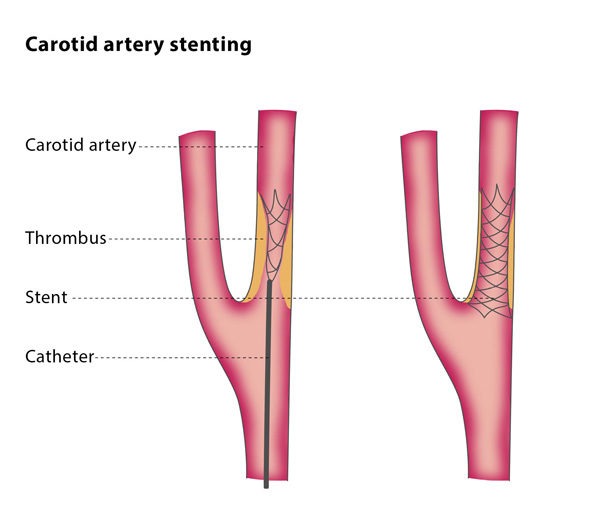What is Carotid Artery Stenting?
Carotid artery stenting is a minimally invasive procedure performed to treat blockages in the carotid artery. A catheter is inserted into a blood vessel, usually in the groin, and threaded to the carotid artery. A stent is then placed at the site of the blockage to keep the artery open and ensure proper blood flow to the brain.
This procedure is an alternative to carotid endarterectomy, a more invasive surgery that involves physically removing plaque from the artery. Carotid stenting is often recommended for patients who are at high risk for traditional surgery due to age, other health conditions, or the location of the blockage.
Potential Risks of Carotid Artery Stenting
Like any medical procedure, carotid artery stenting comes with certain risks. However, it is important to note that the procedure is generally considered safe when performed by an experienced medical team. Here are some potential risks:
- Stroke: One of the most significant risks of carotid artery stenting is the possibility of a stroke during or after the procedure. Plaque or clots can break loose from the artery walls during the procedure and travel to the brain, causing a blockage. However, advancements in technology, such as the use of embolic protection devices, have reduced this risk by capturing debris before it can reach the brain.
- Bleeding: As with any procedure involving the insertion of a catheter, there is a risk of bleeding at the insertion site. While this is typically a minor complication, it can sometimes require additional treatment if the bleeding is severe.
- Blood Clots: After the stent is placed, there is a risk that blood clots could form inside the stent, potentially leading to a stroke. To prevent this, patients are typically prescribed blood-thinning medications (antiplatelets) following the procedure to reduce the risk of clot formation.
- Restenosis: In some cases, the artery may become narrowed again after the stent is placed. This is known as restenosis. While the risk of restenosis is relatively low, it can occur and may require additional treatment or monitoring.
Factors That Influence Risk
Certain factors can increase the risks associated with carotid artery stenting:
- Age: Older patients may face a higher risk of complications, such as stroke, due to the natural aging process and the increased likelihood of having other health conditions.
- Health Conditions: Patients with other cardiovascular diseases, high blood pressure, or diabetes may face additional risks during and after the procedure.
- Experience of the Medical Team: The success and safety of the procedure largely depend on the experience and skill of the medical team performing it. Working with a specialized vascular surgeon or neurologist can significantly reduce the risk of complications.
Is Carotid Artery Stenting Safe?
Despite the potential risks, carotid artery stenting is generally considered safe and effective for treating carotid artery disease. In fact, the procedure can be life-saving, particularly for individuals at high risk of stroke. In many cases, the benefits of restoring blood flow to the brain and reducing stroke risk far outweigh the dangers associated with the procedure.
Conclusion
Carotid artery stenting, while not without risks, is an essential treatment option for patients with carotid artery disease. Stroke, bleeding, and restenosis are potential complications, but advancements in medical technology and proper post-procedure care have significantly reduced these risks. Ultimately, the decision to undergo stenting should be made after a thorough discussion with a specialist, considering the patient’s overall health, age, and risk factors.


